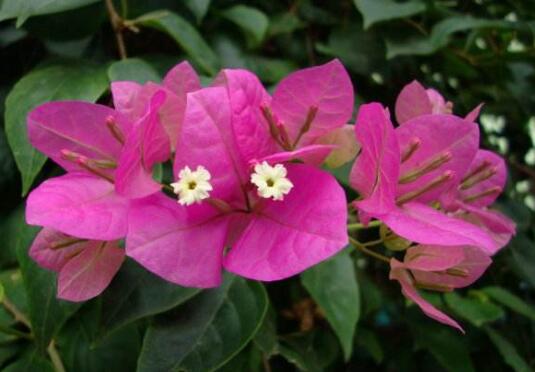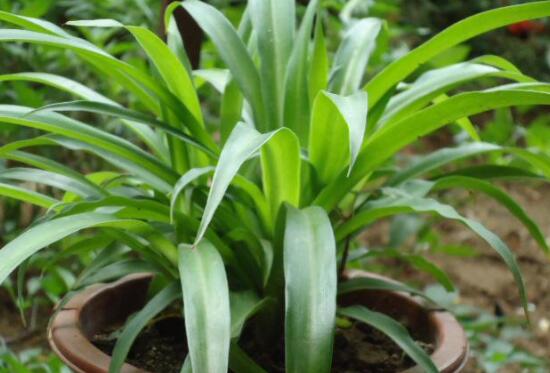What to do with the growth of glabrous flowers? pest control of glabrous cotyledons / 2 insect pests 2 diseases
In the process of cultivating bare-leaf cotyledons, the last thing we want to encounter is the problems of diseases and insect pests, which do great harm to the plant, which will not only affect its ornamental, but also lead to the phenomenon of plant death. What about the bare-leaf flower worms? What do you need to do to control the diseases and insect pests of bare-leaf flowers? Next, the editor will take you to learn about it.
First, what to do with bare leaves and flower worms? find the reason.

If you want to know what to do with the light-leaf flower worm, we must first understand what kind of insect is growing, so that we can carry out targeted treatment, because the treatment methods of each kind of diseases and insect pests are different, and the details are introduced below. Friends who are troubled in this respect can learn about it.
II. Pest control of glabrous flower (pest)
1. Aphids
Aphids are a kind of insect pest that may occur in many plants, and bare-leaf flowers are no exception. It mainly uses nymphs to absorb the sap from leaves, stems, tender heads and young ears, which makes the plant lose a lot of nutrients and finally wither.
Control methods: in view of aphids, the most direct way to kill aphids is to spray them. In terms of pharmaceuticals, we can choose 3000 times of aldicarb wettable powder.
two。 Shell worm
The scale insect is a kind of extremely harmful pest, which mainly threatens the leaves, branches and fruits of crane flowers. It will cause yellowing of leaves, withering of branches, decline of tree potential and so on, as well as coal fouling disease.
Control method: when we deal with the diseases and insect pests of shell insects, we can directly use 45% malathion EC 1000 times to spray and kill them.
3. Control of diseases and insect pests of glabrous flowers (diseases)
1. Leaf spot disease
Leaf spot disease, through its name, we know that it is harmful to plant leaves, there will be many irregular disease spots on the leaves of leaf flowers at the onset of disease, and small black spots will appear on the disease spots over time, which will affect the ornamental quality very much.
Control methods: when we deal with the diseases and insect pests of this glabrous cotyledon, we can use 50% carbendazim wet powder 500 times to spray the diseased plants, usually once every 7-10 days, and then recover after 3-4 times.
two。 Brown spot disease
Brown spot, also known as Rhizoctonia solani, is a fungal disease caused by Rhizoctonia solani. During the disease, many yellow-brown to light brown spots with a diameter of 0.1-0.5cm will appear on the leaves, and the disease spots will spread gradually with the passage of time, resulting in the phenomenon of plant death.
Prevention and control methods: when we find this disease and insect pest of the glabrous cotyledon, if the number of diseased leaves is relatively small, we can remove and destroy them in time. If there are more, we have to use 70% mancozeb wettable powder 400 times to treat it. Generally, the diseased plant is sprayed once every 10 days, and then it can be cured after 3 times.
What about the leaf insects of laurel? disease and pest control of laurel / 2 insect pests and 3 diseases
Diseases and insect pests can be said to be the last problem that all plants want to encounter in the process of growth, and laurel is no exception. This kind of problem is very harmful to it, which not only affects its ornamental, but also causes it to die. What about the leaf worms of laurel? How does laurel's pest control need to be done? Next, the editor will take you to learn about it.
First, what about the leaf worms of laurel? find the reason.
If you want to know what to do with the leaf worms of laurel, we must first understand what kind of insects grow, so that we can deal with them pertinently, because the treatment methods of each kind of diseases and insect pests are different, and the details are described in detail below. Friends who are troubled in this respect can learn about it.
2. Disease and pest control of laurel (pest)
Red wax scale
Red wax scale is a kind of insect of the genus Homoptera. This pest mainly lives on the branches and leaves of laurel and absorbs the sap, which leads to the decline of plant growth, the shrinkage of tree crown and, in serious cases, the death of the whole plant.
Control method: if this pest appears on the laurel, at the initial stage, we should remove the insect or cut off the branches and leaves of many insects in time, and then centrally destroy it. If it is serious, 1500 times of the net EC of 20% planthopper can be used to directly spray the pest.
Spodoptera litura
The large coir moth is a kind of moth of the genus Lepidoptera. Its larvae will parasitize on the leaves of laurel and gradually bite its leaves and shoots, resulting in local baldness of tea bushes and, in serious cases, the death of the whole plant.
Control method: when we deal with this laurel pest, we can directly spray it with 1200 times of 90% Batan wettable powder or 1000 times of 50% fenitrothion EC.
3. Disease and pest control of laurel (disease)
Anthrax
Anthracnose is a disease that mainly threatens the leaves of laurel. At the initial stage of the disease, many brown spots will appear on the leaves, and with the passage of time, the spots will gradually expand and occupy the general area of the leaflets, making the plants unable to carry out photosynthesis and gradually withering and yellowing, and the leaves will gradually fall off.
Control methods: in the control of laurel diseases and insect pests, we can use 1000 times of methyl topiramate wettable powder to spray the diseased plants, usually spray once every 7-10 days, 2-3 times can be cured.
Black spot disease
Black spot is a disease caused by fungi, which mainly harms the leaves, petioles and shoots of laurel. During the disease, many purple-brown spots will appear in the affected parts, and with the passage of time, the spots will gradually expand, and the color will gradually change. Finally, the plant gradually withered.
Control methods: for this kind of laurel diseases and insect pests, we can use methyl thiophanate or carbendazim to spray the diseased plants, usually once every 7-10 days, 2-3 times can be cured.
Brown spot disease
Brown spot, also known as Rhizoctonia solani, is a fungal disease caused by Rhizoctonia solani. During the disease, many yellow-brown to light brown spots with a diameter of 0.1-0.5cm will appear on the leaves, and the disease spots will spread gradually with the passage of time, resulting in the phenomenon of plant death.
Prevention and control methods: when we find this kind of laurel diseases and insect pests, if the number of diseased leaves is relatively small, we can remove and destroy them in time. If there are more, we have to use 2000 times of 50% Sukeling liquid to treat them. Generally, the diseased plants are sprayed once a week and can be cured about 3 times.
What to do when the snow lotus grows insects? disease and pest control of snow lotus / 2 insect pests and 2 diseases
When we breed snow lotus, the last thing we want to encounter is the problem of diseases and insect pests, which do great harm to the plant, and it is easy to make the plant withered if it is not dealt with in time. So what should we do if the snow lotus grows worms? How does the pest control of snow lotus need to be done? Next, the editor will take you to learn about it.
First, what if the snow lotus grows worms? find the reason.
If you want to know what to do with snow lotus worms, we must first understand what kind of insects grow, so that we can deal with them pertinently, because the prevention and control methods of each kind of diseases and insect pests are different, and the details are described in detail below. Interested friends can learn about it.
II. Pest control of Saussurea involucrata (pest)
1. Small land tiger
The small land tiger is also called the soil silkworm, it is a kind of silkworm insect, the body surface is black, it is easy to appear in the humid environment, so we must pay special attention at this time, this pest mainly harms the seedlings of the snow lotus, it will gradually cause the young leaves of the seedlings, and finally lead to the nutrient loss of the snow lotus, thus withering to death.
Prevention and control methods: because the seedlings are relatively fragile, we must control them as soon as possible. to deal with this pest, we can choose 40% chrysanthemum EC 2000, 000, 000 times the solution to directly spray.
two。 Nocturnal moth
In the pest control of snow lotus, nocturnal moth is a relatively common pest, which mainly harms the leaves of snow lotus. It will gradually erode the leaves, affect the beauty of the plant, and even eat up the leaves of snow lotus in the later stage. So that the plant can not grow.
Prevention and control methods: the high incidence period of this pest is from August to September every year, and special attention must be paid during this period. 2.5% trichlorfon powder can be used to spray snow lotus flowers when controlling this pest.
3. Pest control of Saussurea involucrata (disease)
1. Black spot disease
Among the diseases and insect pests of Saussurea involucrata, black spot is one of the most common diseases of Saussurea involucrata. Many gray-brown spots will appear on the leaves when the disease occurs, and some very colored moldy objects will be produced on the disease spots, which will lead to the gradual death of Saussurea with the development of time.
Control method: in the prevention and control of this disease, 75% chlorothalonil 500 × 600 times can be used, the plant can be sprayed once every 10-15 days, and can be basically cured after 1-2 times.
two。 Powdery mildew
Among the diseases and insect pests of Saussurea involucrata, powdery mildew is a common disease. when this disease occurs, some powdery mildew layers appear on the leaves of Saussurea involucrata, which will gradually spread to the whole leaf, making it impossible for Saussurea to carry out photosynthesis. resulting in premature senescence and other phenomena.
Control method: in the prevention and control of this disease, we can use 80% sulfur 400 times plus 72% benzothiourea cyanide 600 times spray to spray the plant.
- Prev

What to do if the rattan rose grows worms? pest control of Fujimoto rose / 2 insect pests 2 diseases
In the growth process of Fujimoto rose, the last thing we want to encounter is diseases and insect pests, this kind of problem is very harmful to the plant, so we must deal with it in time when it is found. What about the growing worm of Fujimoto rose? What do you need to do to control diseases and insect pests of Fujimoto rose? Next, the editor will take you to learn about it.
- Next

What to do with the growth of insects? pest control of green-leaf orchids / 4 insects and 3 diseases
As the leaves of Cymbidium, the adaptability of Cymbidium is very strong, so it is easy to raise and can not be affected by diseases and insect pests. However, growing plants indoors will inevitably catch diseases and be infested by insects for a variety of reasons, and the green leaf orchid is no exception at this point. So, what should we do if the green-leaf orchid grows into a worm?
Related
- Fuxing push coffee new agricultural production and marketing class: lack of small-scale processing plants
- Jujube rice field leisure farm deep ploughing Yilan for five years to create a space for organic food and play
- Nongyu Farm-A trial of organic papaya for brave women with advanced technology
- Four points for attention in the prevention and control of diseases and insect pests of edible fungi
- How to add nutrient solution to Edible Fungi
- Is there any good way to control edible fungus mites?
- Open Inoculation Technology of Edible Fungi
- Is there any clever way to use fertilizer for edible fungus in winter?
- What agents are used to kill the pathogens of edible fungi in the mushroom shed?
- Rapid drying of Edible Fungi

